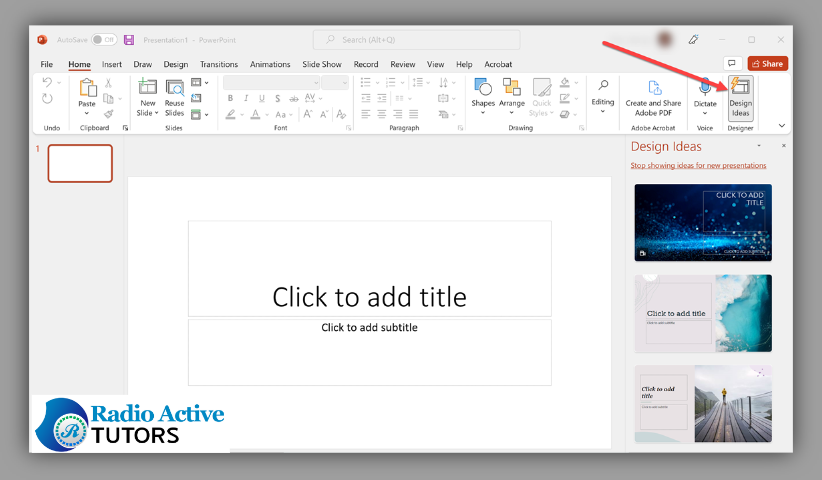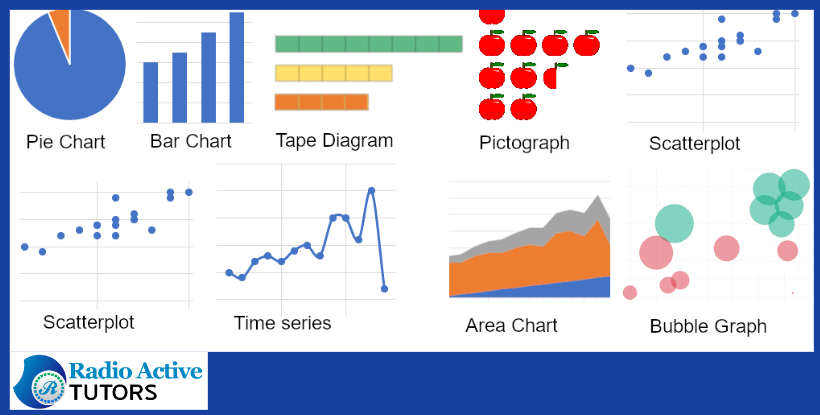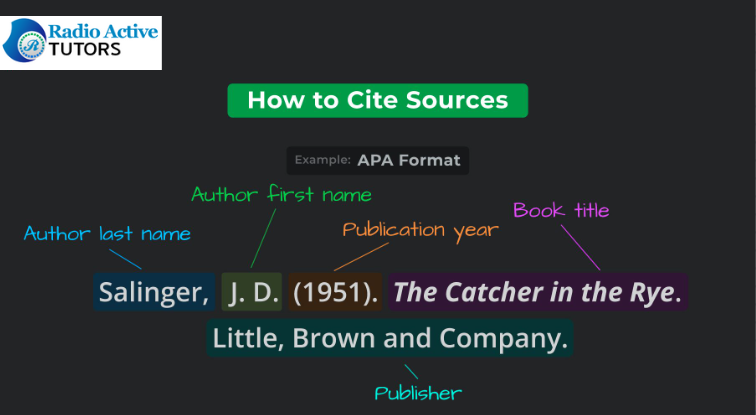Table of Contents
I. Introduction
II. Knowing your Audience
III. Essential Elements of Academic Presentation Slides
IV. Design Principles for Academic Impact
V. Crafting a Clear and Concise Message
VI. Data Presentation and Analysis
VII. Addressing Methodological Concerns
VIII. Effective Use of Citations and References
IX. Practice and Rehearsal Strategies
X. Leveraging Visual Aids in Educational Settings
XI. Emphasizing Practical Applications in Academic Research
XII. Conclusion
- Introduction

A. Significance of Academic Accounting Presentations
In the realm of academia, Accounting Academic Presentation Slides play a pivotal role, serving as a primary vehicle for scholars to disseminate their research findings and contribute to the collective knowledge in the field. These presentation slides bear significant importance, as they encapsulate the essence of intricate accounting research, offering a condensed yet comprehensive visual representation of scholarly work.
Beyond mere information sharing, academic presentations facilitate critical discussions, allowing researchers to engage with peers, receive valuable feedback, and foster collaborative endeavors. Consequently, the significance of meticulously crafting Accounting Academic Presentation Slides lies not only in the effective communication of research but also in the advancement and enrichment of accounting scholarship through meaningful academic discourse.
B. The Dual Purpose: Informative and Educational
Accounting Academic Presentation Slides serve a dual purpose, seamlessly blending informativeness and education to create a compelling scholarly experience. These slides are meticulously designed to convey complex accounting concepts in a concise and accessible manner, ensuring that the audience gains a thorough understanding of the research.
Simultaneously, the educational facet extends beyond mere transmission of information, aiming to stimulate intellectual curiosity and facilitate a deeper comprehension of accounting principles. By achieving this delicate balance between delivering content-rich material and nurturing an educational environment, Accounting Academic Presentation Slides emerge as powerful tools that not only disseminate knowledge but also inspire a continuous pursuit of learning within the academic community.
- Knowing your Audience

A. Adapting Content for Professors and Peers
In crafting Accounting Academic Presentation Slides, a nuanced understanding of the audience is paramount, particularly when tailoring content for professors and peers. For professors, the emphasis lies in presenting a comprehensive and rigorously researched body of work, aligning with the expectations of scholarly depth and methodological soundness. Clarity in communication, coupled with a thorough literature review, is essential to cater to the discerning eye of academia.
On the other hand, when adapting content for peers, the approach may involve a more collaborative tone, emphasizing shared exploration and the potential for collective contribution to the field. Striking this delicate balance between scholarly rigor and collaborative engagement ensures that Accounting Academic Presentation Slides resonate effectively with both professors and peers, fostering a dynamic and intellectually enriching presentation experience.
B. Balancing Depth for Specialists and General Comprehension for All
Navigating the diverse audience within academia requires a delicate balance in Accounting Academic Presentation Slides, striking between providing in-depth insights for specialists while ensuring general comprehension for all. To cater to specialists, the presentation should delve into the intricate details of methodologies, findings, and theoretical frameworks, satisfying the intellectual curiosity of experts in the field.
Simultaneously, maintaining clarity and avoiding unnecessary jargon is crucial to ensuring accessibility for a broader audience, including those with a more general understanding of accounting principles. Achieving this equilibrium enables a presentation to be both insightful for specialists and inclusive for a wider academic audience, fostering engagement and knowledge dissemination across diverse levels of expertise.
- Essential Elements of Academic Presentation Slides

A. Title Slide: Setting the Academic Tone
The Title Slide is a cornerstone in the Essential Elements of Academic Accounting Presentation Slides, serving as the initial point of engagement and setting the academic tone for the entire discourse. This slide encapsulates the essence of the research, featuring a succinct and compelling title that reflects the core theme of the presentation.
Additionally, it includes key details such as the presenter's name, affiliation, and the date, providing essential context for the audience. The design and professionalism of the Title Slide are critical, as it establishes the first impression and captures the attention of the academic audience. By carefully crafting this opening element, presenters create an immediate sense of credibility and professionalism, laying a solid foundation for the academic journey that follows.
B. Agenda Slide: Guiding the Scholarly Journey
The Agenda Slide stands as a pivotal component in the Essential Elements of Academic Accounting Presentation Slides, acting as a roadmap to guide the scholarly journey for the audience. Positioned after the Title Slide, it provides a structured overview of the presentation's flow, offering a clear outline of the key topics to be covered.
This slide not only serves as an organizational tool but also sets expectations for the audience, allowing them to anticipate the structure and depth of the forthcoming content. By effectively utilizing the Agenda Slide, presenters enhance audience engagement, facilitate easier navigation through complex material, and underscore the professionalism and meticulous planning inherent in the academic presentation.
C. Comprehensive Literature Review: Placing Your Work in Context
The Comprehensive Literature Review holds a paramount position among the Essential Elements of Academic Accounting Presentation Slides, acting as the intellectual compass that places the presenter's work in a broader scholarly context. This slide synthesizes relevant literature, showcasing the presenter's familiarity with existing research and theoretical frameworks.
By meticulously summarizing and analyzing prior studies, the presenter establishes the academic foundation upon which their research builds. This element not only demonstrates a scholarly awareness of the field but also helps the audience appreciate the evolution of ideas leading to the presenter's unique contribution. A well-crafted Comprehensive Literature Review slide serves as a vital link, bridging past and present research, and exemplifies the presenter's position within the academic landscape.
D. Methodology Section: Detailing Research Approaches
The Methodology Section stands as a crucial pillar among the Essential Elements of Academic Accounting Presentation Slides, offering a detailed exposition of the research approaches employed. Positioned to follow the Comprehensive Literature Review, this section provides transparency into the presenter's investigative methods, data collection strategies, and analytical techniques.
By clearly outlining the research design, participants, and data analysis procedures, the presenter not only demonstrates the rigor of their work but also invites scholarly scrutiny. This slide allows the audience to assess the validity and reliability of the study, fostering an environment of academic trust. A well-crafted Methodology Section thus serves as a cornerstone in conveying the systematic and methodical underpinnings of the research presented.
IV. Design Principles for Academic Impact
A. Striking a Balance Between Formality and Creativity
In the realm of Design Principles for Academic Impact in Academic Accounting Presentation Slides, achieving a delicate equilibrium between formality and creativity is paramount. While maintaining a formal aesthetic underscores the seriousness of the academic endeavor, infusing a touch of creativity can captivate the audience and make complex information more engaging.
Selecting a professional color palette, using consistent fonts, and incorporating academic symbols contribute to formality, while creative visual elements and well-designed graphics can enhance comprehension and retention. Striking this balance ensures that the presentation exudes professionalism, yet remains dynamic enough to sustain the audience's interest, creating a visually impactful and intellectually stimulating academic experience.
B. Consistency in Formatting and Citations
Consistency in formatting and citations stands as a linchpin in the Design Principles for Academic Impact in Academic Accounting Presentation Slides. Uniformity in formatting, including font styles, sizes, and slide layouts, imparts a polished and professional look to the presentation. Equally crucial is the meticulous adherence to citation styles, ensuring that academic integrity is maintained.
Consistent formatting and proper citations not only enhance the visual appeal but also convey a sense of rigor and attention to detail. This commitment to uniformity not only streamlines the visual coherence of the slides but also reflects the presenter's dedication to scholarly precision, fostering credibility and trust among the academic audience.
C. Utilizing Tables and Figures for Data Representation
Design Principles for Academic Impact in Academic Accounting Presentation Slides advocate for the strategic use of tables and figures as powerful tools for data representation. Incorporating well-designed tables and figures not only adds visual appeal but also facilitates the clear and concise communication of complex financial data. These visual elements serve as a bridge between theoretical concepts and empirical findings, offering a tangible illustration that aids audience comprehension.
By carefully choosing the type and format of tables and figures, presenters can enhance the audience's ability to grasp intricate details, making the data more accessible and impactful within the academic context. This deliberate integration of visual aids elevates the overall quality of the presentation, ensuring that the information is not only communicated effectively but also leaves a lasting impression on the scholarly audience.
D. Incorporating Academic Icons and Symbols
In the realm of Design Principles for Academic Impact in Academic Accounting Presentation Slides, the incorporation of academic icons and symbols emerges as a nuanced strategy to enhance visual communication. Beyond mere aesthetics, these symbols convey a sense of scholarly identity and align the presentation with the formalities of academia.
Integrating symbols such as book icons, mathematical notations, or other relevant academic imagery serves to reinforce the gravity and professionalism of the content. Moreover, these elements can act as visual cues, guiding the audience through complex concepts and signaling the academic nature of the discourse. Thoughtful inclusion of academic icons and symbols contributes to the overall cohesiveness of the presentation, creating a visual language that resonates with the scholarly context and leaves a lasting impression on the audience.
- Crafting a Clear and Concise Message

A. Structuring Your Presentation for Clarity
Crafting a clear and concise message is a cornerstone in the art of Academic Accounting Presentation Slides, particularly when focusing on structuring the presentation for clarity. The effectiveness of scholarly communication hinges on the presenter's ability to distill complex accounting concepts into a comprehensible narrative.
This involves a meticulous structuring of the presentation, where each slide contributes cohesively to the overarching message. Clear headings, well-defined sections, and a logical flow of information guide the audience through the scholarly journey. By ensuring that the narrative unfolds logically and key points are emphasized, presenters enhance the clarity of their message, making the intricate world of accounting research more accessible and digestible for the academic audience.
B. Building Logical Flow in Your Academic Argument
Crafting a clear and concise message in Academic Accounting Presentation Slides necessitates a meticulous focus on building a logical flow within the academic argument. The coherence of the presentation relies on the seamless progression of ideas, with each slide contributing to a well-structured narrative.
Presenters achieve this by establishing a logical sequence, connecting theoretical frameworks to research methodologies and findings. Transition phrases and visually intuitive cues guide the audience through the academic argument, ensuring that complex accounting concepts are presented in a logically unfolding manner. By thoughtfully constructing this logical flow, presenters enhance the clarity of their message, fostering a deeper understanding and engagement from the academic audience.
C. Signposting: Guiding Your Audience Through Your Research Journey
Crafting a clear and concise message in Academic Accounting Presentation Slides involves adeptly utilizing signposting to guide the audience through the research journey. Signposting acts as a navigational tool, providing clear indicators of key points, transitions, and the overall structure of the presentation.
This technique involves using explicit language, visual cues, and strategic repetition to emphasize critical concepts and signal shifts in the academic discourse. By incorporating effective signposting, presenters help their audience to anticipate and comprehend the flow of information, ensuring a smoother navigation through the intricacies of accounting research. This thoughtful guidance enhances the overall clarity of the message, enabling the audience to follow the research journey with greater ease and engagement.
- Data Presentation and Analysis

A. Visualization Techniques for Academic Audiences
In the context of Academic Accounting Presentation Slides, the segment on Data Presentation and Analysis is paramount, particularly when considering visualization techniques for academic audiences. This phase involves selecting and employing visual elements such as charts, graphs, and tables that are not only aesthetically pleasing but also convey complex financial data with precision.
Academic audiences benefit from clear, well-labeled visualizations that aid in the comprehension of intricate accounting concepts. Choosing appropriate visual representation methods, such as histograms for distribution patterns or line charts for trends, ensures that the audience can readily grasp the nuances of the data being presented. By employing effective visualization techniques, presenters enhance the accessibility and impact of their academic content, facilitating a more profound understanding of the financial insights they aim to convey.
B. In-Depth Analysis of Financial Data
In Academic Accounting Presentation Slides, the section dedicated to Data Presentation and Analysis takes a crucial turn with an in-depth examination of financial data. This phase involves a meticulous exploration and interpretation of complex financial information, delving into the nuances of accounting metrics and outcomes.
Presenters analyze various financial aspects, such as balance sheets, income statements, and cash flow statements, offering a comprehensive understanding of the underlying data. Through this in-depth analysis, the audience gains valuable insights into the financial intricacies presented, reinforcing the scholarly rigor of the research. By focusing on the detailed scrutiny of financial data, presenters underscore the depth of their academic exploration, contributing substantively to the audience's comprehension of the accounting research at hand.
C. Interpreting Statistical Results and Graphs
In the realm of Academic Accounting Presentation Slides, the phase of Data Presentation and Analysis extends to the critical task of interpreting statistical results and graphs. This stage involves a meticulous examination of numerical outcomes and visual representations, dissecting the significance of statistical findings.
Presenters navigate through graphs and charts, elucidating patterns, correlations, and statistical measures to convey the nuanced implications of the data. By providing clear interpretations, they empower the academic audience to draw informed conclusions from the presented statistical evidence. This thorough analysis not only reinforces the credibility of the research but also enables a deeper understanding of the quantitative aspects of the accounting study, elevating the academic discourse to a more sophisticated level of comprehension.
- Addressing Methodological Concerns

A. Addressing Limitations in Your Research
When delving into Addressing Methodological Concerns in Academic Accounting Presentation Slides, a pivotal aspect involves transparently addressing limitations within the research. This phase requires a candid acknowledgment and discussion of the constraints, challenges, or potential biases inherent in the chosen methodologies. By openly recognizing these limitations, presenters demonstrate a commitment to scholarly integrity and a nuanced understanding of the study's boundaries.
Addressing methodological concerns allows the academic audience to contextualize the findings, fostering a more informed and critical appraisal of the research. This forthrightness not only contributes to the robustness of the academic argument but also exemplifies a scholarly responsibility to present a comprehensive and honest account of the research process.
B. Discussing Potential Areas for Future Research
In the realm of Academic Accounting Presentation Slides, addressing methodological concerns extends to discussing potential areas for future research. This segment involves a forward-looking exploration, where presenters candidly identify the limitations of their current methodologies and propose avenues for future investigation.
By highlighting these areas, presenters not only demonstrate a critical awareness of the research's boundaries but also contribute to the ongoing academic discourse. This forward-thinking approach not only invites collaboration and engagement from the audience but also positions the research within the broader landscape of evolving accounting scholarship. Addressing potential areas for future research adds depth to the presentation, showcasing the presenter's commitment to continuous scholarly inquiry and the advancement of knowledge within the field.
C. Handling Ethical Considerations in Academic Presentations
Addressing methodological concerns in Academic Accounting Presentation Slides extends to the ethical considerations inherent in the research process. This critical aspect involves a transparent discussion of the ethical framework guiding the study, including issues related to data collection, participant consent, and confidentiality.
Presenters navigate the ethical landscape, detailing the steps taken to ensure the research adheres to established ethical standards and norms within the academic community. By openly addressing these considerations, presenters not only reinforce the credibility and integrity of their work but also demonstrate a commitment to ethical scholarship. This discussion fosters a deeper understanding among the academic audience, showcasing the presenter's conscientious approach to navigating ethical challenges within the realm of accounting research.
- Effective Use of Citations and References

A. Navigating Academic Citation Styles
In Academic Accounting Presentation Slides, the effective use of citations and references is paramount, and this involves adeptly navigating academic citation styles. Presenters must adhere to specific citation conventions such as APA, MLA, or Chicago, ensuring consistency and accuracy throughout the presentation. Proper citation not only upholds the academic integrity of the research but also enables the audience to trace the sources, fostering transparency and credibility.
Navigating these citation styles requires meticulous attention to detail, encompassing proper formatting, citation of diverse sources, and acknowledgment of prior contributions. By skillfully incorporating citations into the presentation, presenters not only pay homage to existing scholarship but also position their work within the broader academic conversation, showcasing a scholarly commitment to rigorous and ethical research practices.
B. Building a Robust Bibliography
The effective use of citations and references in Academic Accounting Presentation Slides involves the meticulous task of building a robust bibliography. This entails compiling a comprehensive list of scholarly sources, including books, articles, and other relevant materials, that have informed and supported the research. Presenters should ensure that the bibliography is organized, follows the prescribed citation style, and provides the audience with a clear roadmap to delve deeper into the subject matter.
A robust bibliography not only reinforces the academic rigor of the presentation but also serves as a valuable resource for peers and researchers interested in exploring the topic further. By curating a thorough bibliography, presenters contribute to the scholarly ecosystem, facilitating the dissemination of knowledge and reinforcing the credibility of their academic endeavors.
C. Acknowledging Previous Research Contributions
In the realm of Academic Accounting Presentation Slides, the effective use of citations and references involves a crucial aspect – acknowledging previous research contributions. This entails recognizing and attributing the work of scholars whose insights have laid the foundation for the current research. By citing relevant literature, presenters not only demonstrate a scholarly engagement with existing knowledge but also pay homage to the intellectual heritage of the field.
Acknowledging previous research contributions serves to situate the current study within the broader academic context, fostering a sense of continuity and dialogue. This practice not only adds depth and credibility to the presentation but also reinforces the collaborative nature of scholarly inquiry, showcasing a respectful and conscientious approach to academic discourse.
- Practice and Rehearsal Strategies

A. Fine-Tuning Your Verbal Delivery
In the domain of Academic Accounting Presentation Slides, refining one's verbal delivery through practice and rehearsal strategies is indispensable. This process involves meticulously fine-tuning the spoken narrative to complement the visual elements on the slides. Presenters must focus on articulation, pace, and tone to ensure a clear and engaging verbal presentation.
Practicing in front of a mirror, recording oneself, or seeking feedback from peers can be effective strategies. By rehearsing the verbal delivery, presenters gain confidence, refine their timing, and enhance their ability to convey complex accounting concepts coherently. This practice not only elevates the overall quality of the presentation but also ensures that the spoken component aligns seamlessly with the visual elements, creating a compelling and impactful academic discourse.
B. Seeking Peer Feedback for Improvement
In the realm of Academic Accounting Presentation Slides, a crucial aspect of practice and rehearsal strategies involves seeking peer feedback for improvement. Presenters can greatly benefit from the perspectives of their peers, who offer valuable insights into the clarity, coherence, and overall effectiveness of the presentation.
By presenting to colleagues or fellow researchers, presenters receive constructive feedback on their verbal delivery, slide design, and content organization. This collaborative approach not only refines the presenter's skills but also ensures that the academic content is accessible and engaging to diverse audiences. Incorporating peer feedback into the rehearsal process contributes to continuous improvement, enhancing the overall quality and impact of the academic accounting presentation.
- Leveraging Visual Aids in Educational Settings

A. Infographics for Conceptual Clarity
When leveraging visual aids in Academic Accounting Presentation Slides, incorporating infographics emerges as a powerful strategy for enhancing conceptual clarity. Infographics offer a visually compelling way to represent complex accounting concepts, relationships, and data. By combining concise text with intuitive graphics, presenters can distill intricate information into easily digestible and memorable visuals.
Infographics not only facilitate a clearer understanding of abstract ideas but also engage the audience through a dynamic and visually appealing format. The strategic use of infographics in academic presentations ensures that complex accounting concepts are communicated with precision, aiding the audience in grasping and retaining key information effectively.
B. Interactive Tools for Engaging Academic Audiences
In the realm of Academic Accounting Presentation Slides, the strategy of leveraging visual aids extends to incorporating interactive tools for engaging academic audiences. Utilizing interactive elements such as clickable charts, graphs, or embedded multimedia not only enhances the visual appeal but also encourages active participation from the audience.
These tools allow the presenter to navigate through data dynamically, fostering a more engaging and collaborative learning experience. By inviting audience interaction, presenters create a space for questions, discussions, and a deeper exploration of accounting concepts. This interactive approach not only sustains the audience's interest but also contributes to a more immersive and impactful academic presentation, promoting active involvement and comprehension among the scholarly audience.
- Emphasizing Practical Applications in Academic Research

A. Bridging Theoretical Concepts with Real-World Scenarios
In the landscape of academic research, particularly in Academic Accounting Presentation Slides, emphasizing practical applications involves a crucial strategy – bridging theoretical concepts with real-world scenarios. This approach intertwines theoretical frameworks with tangible, practical examples from the business world, illustrating the relevance and applicability of academic insights.
By grounding abstract concepts in real-world scenarios, presenters not only enhance the audience's understanding but also highlight the practical implications of their research. This bridging of theory and application fosters a deeper appreciation for the significance of academic work in addressing real-world challenges within the accounting domain. Through this strategic emphasis on practical applications, presenters create a narrative that resonates with both the theoretical rigor of academia and the pragmatic needs of the business landscape.
B. Illustrating How Accounting Research Impacts Business Practices
In the context of academic research, particularly in Academic Accounting Presentation Slides, a strategic emphasis on practical applications involves illustrating how accounting research directly impacts business practices. This approach seeks to bridge the gap between theoretical insights and real-world implications, demonstrating the tangible contributions of academic work to the business environment.
By showcasing specific examples of how accounting research informs decision-making, improves financial strategies, or enhances organizational efficiency, presenters elucidate the practical relevance of their findings. This emphasis not only reinforces the connection between academia and industry but also underscores the transformative potential of rigorous accounting research in shaping and improving business practices. Through this illustrative approach, presenters establish a compelling narrative that positions their academic work as a catalyst for positive change in the realm of business.
XII. Conclusion
In conclusion, crafting an impactful Academic Accounting Presentation involves a meticulous blend of clear communication, thoughtful design, and a commitment to bridging theoretical depth with real-world applicability. Throughout the presentation, addressing methodological concerns, leveraging visual aids, and emphasizing practical applications contribute to a comprehensive and engaging academic discourse. From setting the academic tone with a well-structured title slide to navigating ethical considerations and acknowledging previous research contributions, the presenter weaves a narrative that reflects scholarly rigor and ethical responsibility.
The strategic use of infographics, interactive tools, and a focus on practical implications further enriches the presentation, making complex accounting concepts accessible and relevant to a diverse academic audience. Ultimately, an effective academic presentation in accounting not only disseminates knowledge but also inspires continued inquiry and fosters a deeper understanding of the dynamic intersection between theoretical research and practical business impact.
